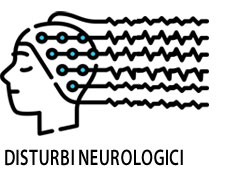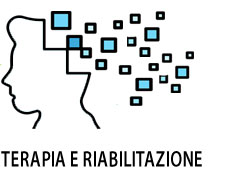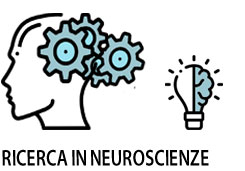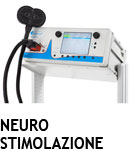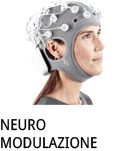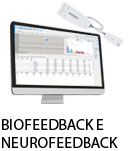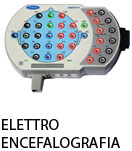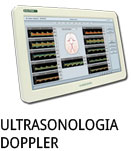- +39 011 5821948
- info@geasoluzioni.it
- Lun - Ven 8:00 - 17:00
Pubblicazioni
The Effect of Intermittent Theta Burst Stimulation (iTBS) in Patients With Alcohol Use Disorder: Study Protocol for a Randomized Controlled Trial
- Abstract:
- Alcohol dependence or alcohol use disorder (AUD) is a major international public health issue and a chronic disease with high relapse rates (1). Marked medical and psychiatric comorbidity and high numbers of premature deaths result from direct and indirect causes of excessive alcohol use (2). The disorder is associated with key societal impact goals influencing health related targets relevant to the Sustainable Development Goals (SDGs) of maternal and child health, mental health, injuries, and poisonings. Worldwide alcohol abuse was responsible for 3 million deaths (5.3% of all deaths) in 2016 and 132.6 million disability-adjusted life years (3). Critically however, the treatment of alcohol addiction is currently limited to acute withdrawal symptoms, but lacks effective interventions to reduce craving and prevent relapse, which are clinically the most relevant targets for the treatment of substance dependence. According to previous studies, non-conscious appetitive reactions occur when patients are exposed to alcohol-related cues and these reactions might explain why AUD patients relapse (4, 5). Furthermore, brain activity in reward-related areas in response to alcohol-related cues is positively related to the amount of post-relapse alcohol consumption (6). Thus, one way to effectively treat AUD may be through a targeted neurostimulation. An increasing number of studies have suggested a potential role for non-invasive neuromodulation as a means to target AUD (7, 8). Repetitive transcranial magnetic stimulation (rTMS) is a non-invasive, cortical stimulation technique. An alternating electric current is applied from a coil which produces a magnetic field that depending on the frequency, can inhibit or activate cortical neurons both locally at the site of the coil and also have more distal network effects. The current results in high intensity magnetic pulses that pass through the skull and result in an electric current in the neural tissue, which can change cortical activity (7, 9). rTMS has been shown to be effective in large randomized controlled trial studies in a range of neuropsychiatric diseases including depression and obsessive-compulsive disorder (10, 11). With respect to disorders of addiction, a meta‐analysis revealed a significant anti‐craving effect of excitatory rTMS of the left dorsolateral prefrontal cortex (DLPFC) in patients with substance dependence (12). In AUD specifically, one study suggested that high-frequency rTMS on either right or left DLPFC significantly reduce craving scores in patients (13). In contrast, another study showed that a single rTMS stimulation session had no significant effects on alcohol craving in alcohol dependent patients emphasizing the potential need for repeated sessions (14). Several studies have reported the potential of rTMS to reduce craving in people with alcohol dependence, but multiple different parameters and protocols were reported with limited consistency (13–18). Theta burst stimulation (TBS) is a rTMS technique that displays faster and more robust action compared to conventional rTMS protocols (19), and has excellent tolerability (20) and safety (21). intermittent theta burst stimulation (iTBS) and continuous theta burst stimulation (cTBS) are two different methods with facilitating and inhibitory effects, respectively (22). A randomized, multicenter, non-inferiority trial to compare iTBS with 10 Hz rTMS in patients with treatment-resistant depression targeting the left DLPFC demonstrated that iTBS was non-inferior to conventional 10 Hz rTMS in the treatment of depression (23). An increasing number of studies have focused on TBS in the field of addiction. One study demonstrated that both medial prefrontal cortex (mPFC) rTMS and right DLPFC cTBS reduced gambling reinforcement in pathological gamblers (24). A recent pilot study showed that 4 sessions of iTBS added to cognitive-behavioral therapy (CBT) improved nicotine abstinence. The study provided evidence for a potential effect of additional iTBS on nicotine dependence and for lasting effects, enhanced abstinence rates for up to three months (25). To data, no reported studies investigating the efficacy of left DLPFC iTBS in reducing craving in AUD patients.
- Patologie/Applicazioni:
- Anno:
- 2020
- Tipo di pubblicazione:
- Articolo
- Parola chiave:
- stimolazione magnetica transcranica; iTBS; dipendenze; craving; Disturbo da abuso di alcol; Alcol; Double Blind
- Testata scientifica:
- Frontiers in Psychiatry
- Nota:
- Lo scopo di questo studio controllato randomizzato in doppio cieco è di indagare sull'efficacia dell'iTBS sull'area DLPFC di sinistra in una popolazione di pazienti affetti da disturbo da abuso di alcol, rispetto all' iTBS placebo. L'outcome primario è l'effetto sul craving mentre gli esiti secondari sono legati alla quantità di alcol assunto e ai tassi di recidiva. In particolare, si utilizza uno stimolatore magnetico MagPro R30 di MagVenture collegato ad una bobina a farfalla da 90 mm sulla DLPFC di sinistra con protocollo iTBS: 80% della soglia motoria, triplette di burst a 50 Hz, ripetuti a 5 Hz di durata 2 s on e 8 s off, ovvero 600 impulsi a sessione per un totale di 3 min. Il trattamento comprende 10 sessioni in totale, che consistono in due sessioni al giorno (una volta al mattino e una volta al pomeriggio, 10 sessioni a settimana). La iTBS è una nuova forma di rTMS che ha dimostrato di migliorare l'induzione del potenziamento sinaptico a lungo termine. L'effetto è simile all'rTMS ad alta frequenza ma in un tempo più breve. Lo studio è promettente in quanto ha dimostrato il risultato preliminare di "effetto moderato", ma data la coesistenza di molte variabili legate alla complessità dei soggetti affetti dal disturbo da abuso di alcol, sono necessari ulteriori studi che possano aumentare il grado di efficacia dell'iTBS per la cura di tale disturbo.
- DOI:
- doi.org/10.3389/fpsyt.2020.00210
La nostra storia
GEA soluzioni si affaccia nel 2013 al mercato della strumentazione medicale di alto livello tecnologico ma la sua storia parte da più lontano, clicca qui per approfondire.
GEA SOLUZIONI SRL
via Spalato 72/A, Torino
Tel.: 011 5821948 / 011 4463853
Fax: 011 0433281
Email: info @ geasoluzioni.it
P. IVA IT11696920013
REA TO1233648

